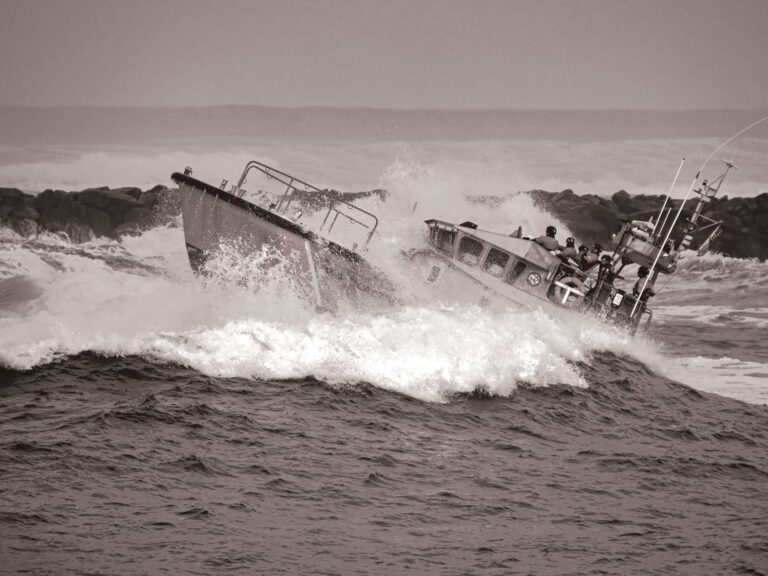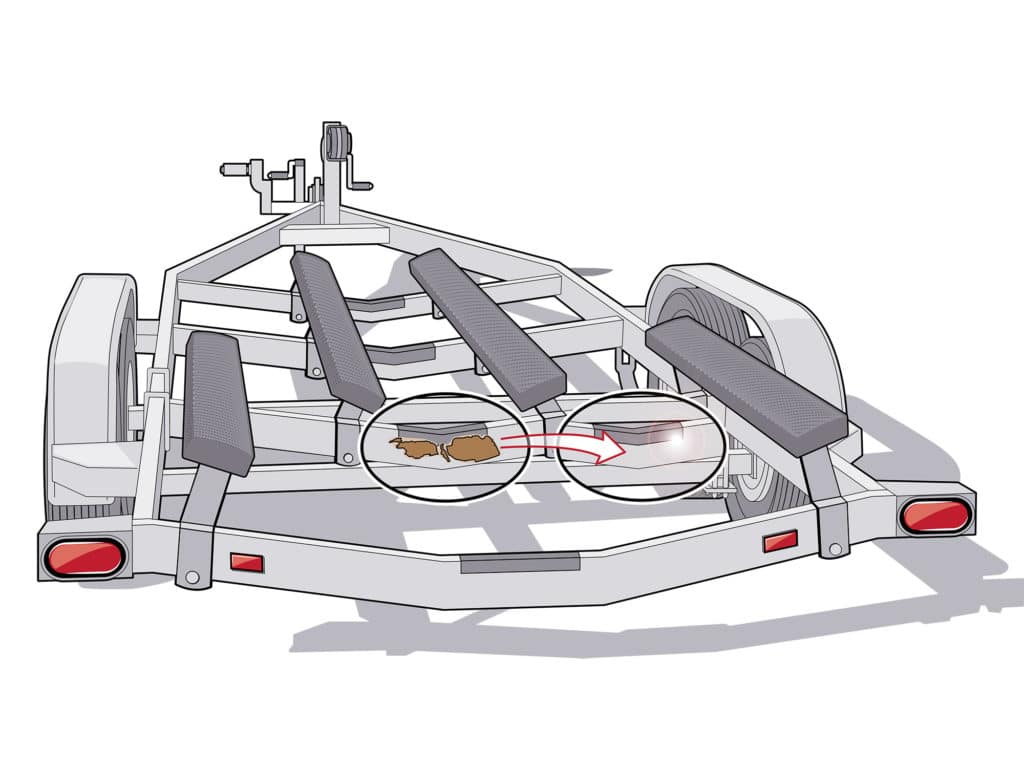
Rust never sleeps, and nowhere is this more apparent than on a steel boat trailer. Be it painted or galvanized, dunked in fresh water or the briny, steel trailers eventually succumb to the unrelenting march of corrosion as the iron within the steel alloy seeks to return to its natural state—iron oxide.
While the old saying might ring true, new prep-and-paint formulas have emerged that help slow down the progression of rust, if not put it in a state of suspended animation. One of the most effective on the market today is RustSeal from KBS Coatings.
This multistep system relies heavily on careful prep and cleaning of the affected surfaces as much as proper application of the coating itself. When done right, RustSeal not only slows down previously rusty spots, but also helps prevent rust from getting a foothold in other areas. The coating is nonporous, flexible and extremely tough. It’s capable of adhering to almost any prepared surface. Because it’s moisture-cured, the coating is made stronger with continued exposure to water.
For this project, we decided to work on a particularly rusty cross member of a galvanized boat trailer. After 15 years of heavy saltwater use, the original zinc galvanizing was beginning to peel away in spots, leaving the underlying steel exposed and subject to corrosion. It was not enough to weaken structural strength, but might eventually if left unchecked. And besides, it looked ugly. The coating is available in 10 colors; we chose the galvanized-steel color to match the other galvanized surfaces of the trailer.
A word of warning: The chemicals used in KBS Klean, RustBlast and RustSeal are harmful, even caustic, to skin, eyes and the respiratory system. Be sure to always work in a well-ventilated area, and wear protective gloves and clothing, eye goggles and a respirator during every phase of this project.
Skill Level: 2 of 5
Finish Time: Approx. 2 days
Tools and Supplies
- KBS RustSeal three-part kit with 1-gallon bottles of Klean and RustBlast, and 1-gallon can of RustSeal ($199.95; kbs-coating.com)
- Spray bottles (for KBS Klean and RustBlast)
- Disposable bristle brushes
- Scraper, wire brush or wire wheel with power drill
- 320- and 400-grit sand-paper and sanding block
- Stiff-bristle scrub brush and scouring pad
- Disposable 7-mil nitrile gloves
- Respirator mask ($17.99; harborfreight.com)
- Protective eye goggles
- Protective clothing ($11.36 per Tyvek disposable suit; amazon.com)
- Garden hose and fresh water
- Drop cloth or paper to protect surface under trailer
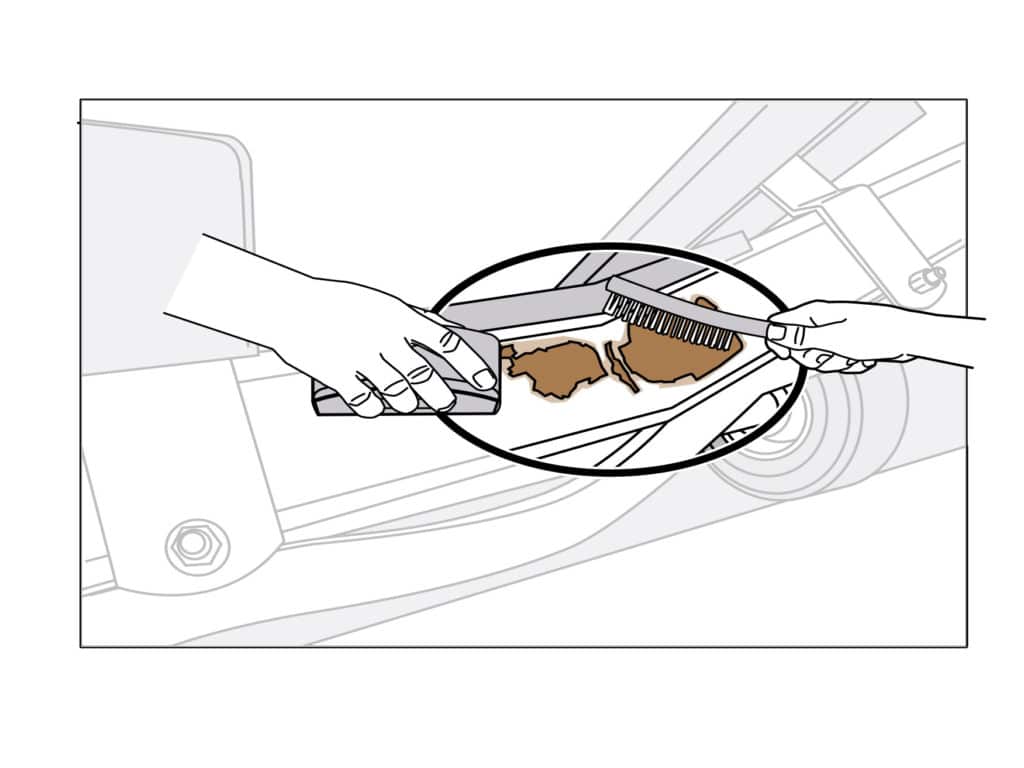
Surface prep is key. Start by removing as much peeling paint and loose scale as possible with a scraper, wire brush or wire wheel on a drill motor. Sand rusty surfaces with 320-grit sandpaper as close as possible to the bare metal. Sand the nonrusty painted area lightly with 400-grit sandpaper. If feasible, you can also sand-blast the rusty areas. Once done scraping and sanding, wash the surface thoroughly with soap and washer to remove dust, rust flakes, dirt and salt residue. Let it dry before moving to the next step.
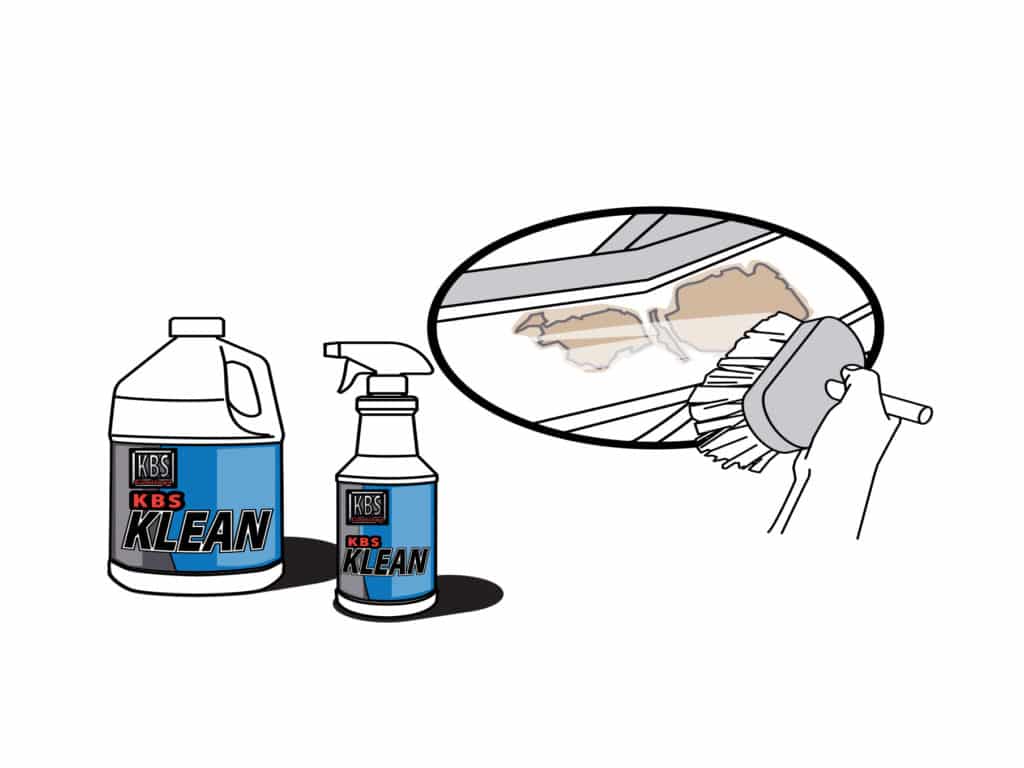
KBS Klean removes grease and oil. It’s designed to mix with warm water, with dilution rates hinging on the amount of contamination. Since the cross member had little contamination, we used a 50-50 mix of water to KBS Klean, applying it liberally with a hand sprayer, then scrubbing with a stiff-bristle brush and scouring pad for about 10 minutes. Don’t let the surface dry without rinsing away the KBS Klean; after scrubbing, rinse the entire area with a garden hose, then allow it to dry for 24 hours.
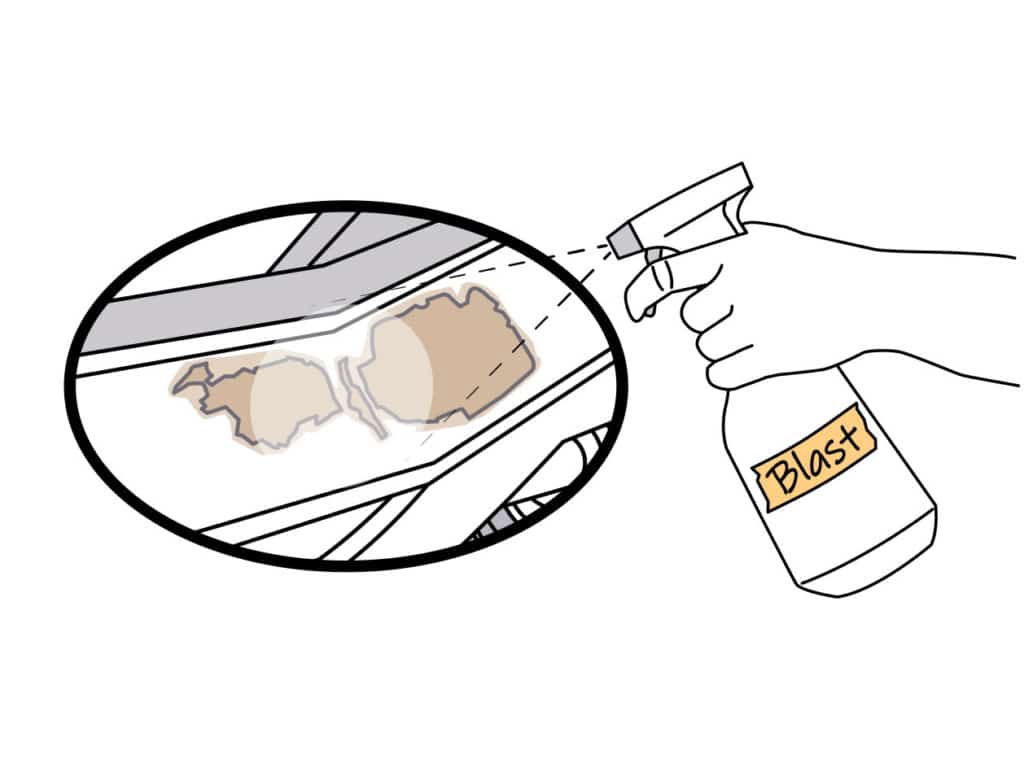
RustBlast is a rust-removing and metal-etching chemical with an acid that’s applied full-strength to surfaces in preparation for the final coating. We used a hand-spray bottle to treat the cross member, keeping it wet for at least 20 minutes, and up to an hour for the most heavily rusted spots. This lets it eat away at the corrosion, but it’s important not to let RustBlast dry on the surfaces before rinsing with a garden hose to avoid a heavy zinc-phosphate residue that might impede the RustSeal coat from adhering.
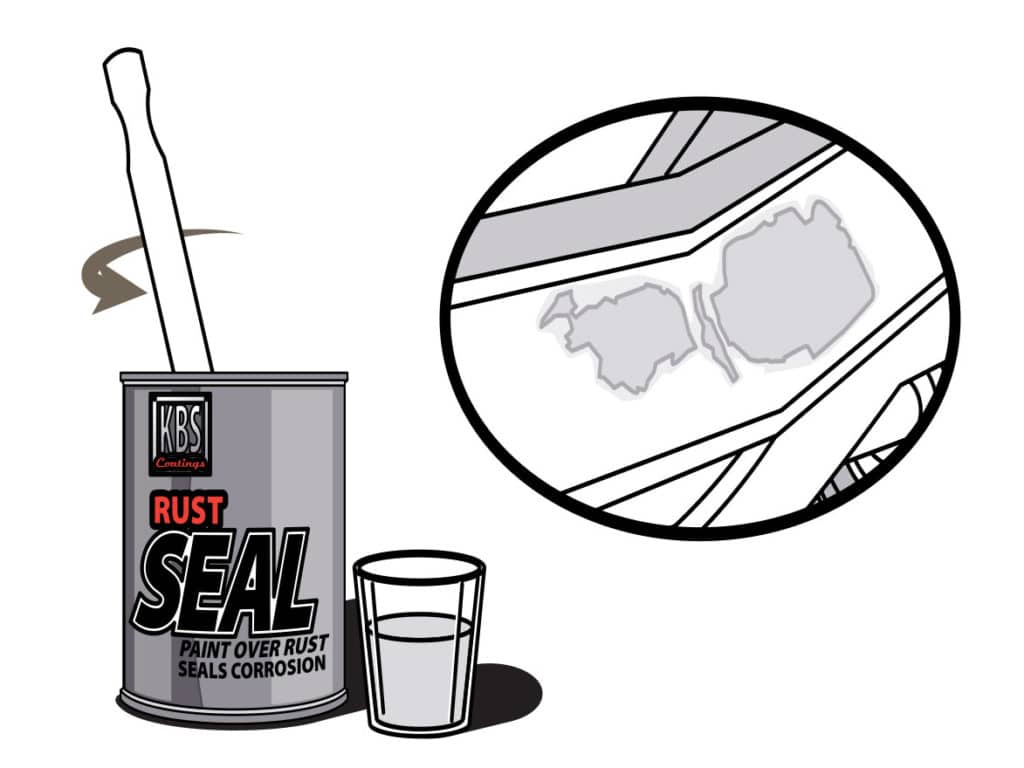
This one-part paint requires stirring with a stick in the can for several minutes to ensure that solid material pigments at the bottom are thoroughly dispersed. Don’t shake the can prior to opening because this creates air bubbles. Once the paint is mixed, pour the amount needed for the job into a separate container and reseal the can. KBS warns against painting out of the can. If storing a partially used can, use heavy plastic wrap between the lid and can, or you might not be to open the can again.
Read Next: More Weekend Workbook Projects
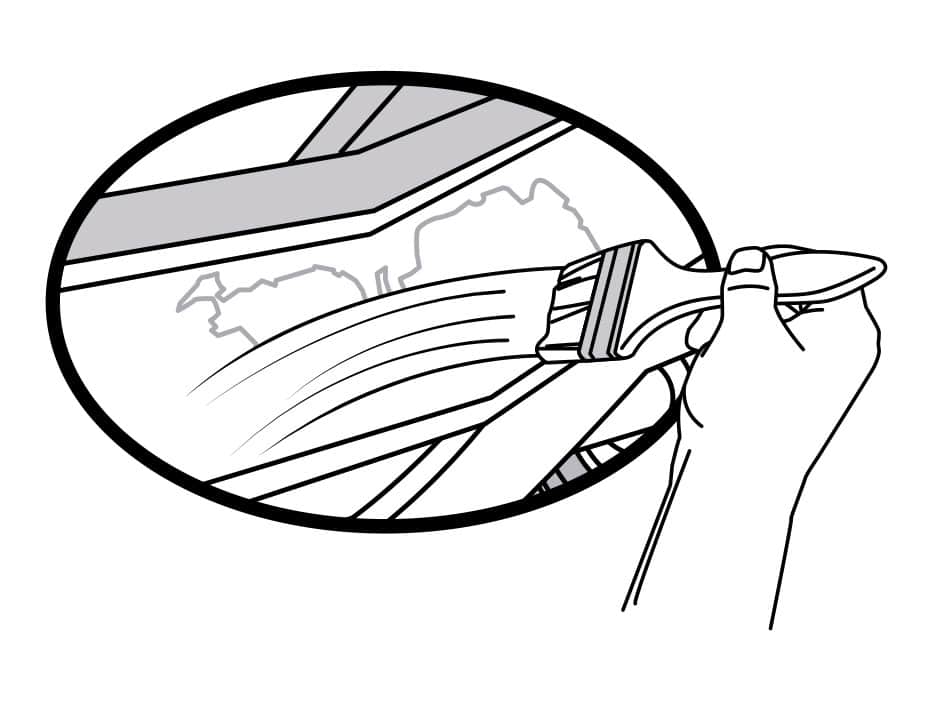
We used a bristle brush to apply three thin coats, recoating immediately after the previous coat was dry to the touch, usually within two to four hours, but you can wait up to six hours between recoats. Avoid overworking the brush; this inhibits RustSeal’s ability to flow out, self-level and create a smooth finish. Avoid heavy coats, which can create surface bubbles that trap solvent gas underneath and reduce RustSeal’s corrosion-inhibiting nature. We used less than a quart of paint for the cross member.






